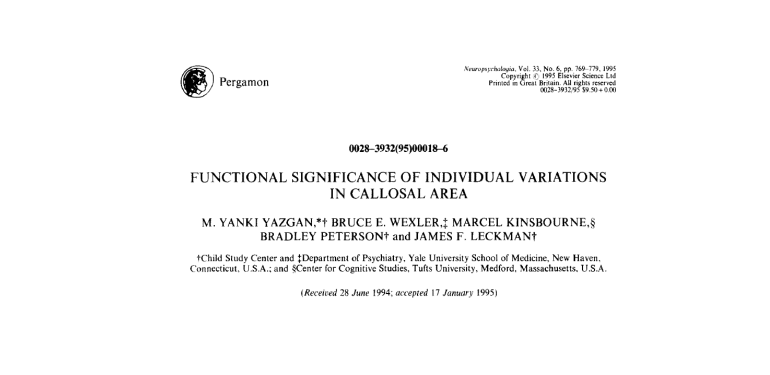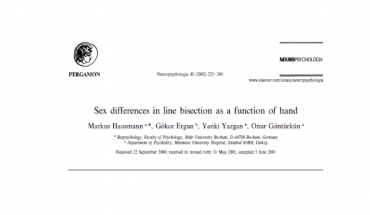Abstract
We considered the hypothesis that the richness of callosal interhemispheric connections has a role in determining the degree of behaviouraf laterality and time-sharing ability in dual-task performance. Behavioural laterality as measured by dichotic word listening, line bisection and turning bias tests correlated inversely with the midsagittal cross-sectional area ofthe corpus callosum, as seen on MRI. The amount of dual task interference was strongly inversely correlated with the callosal area in both within-hemisphere and between-hemispheres conditions. These relationships between normal variations in callosal area, and outcomes on tests both of laterality and time-sharing capacity in normal adults suggest that the corpus callosum assumes a cross-excitatory role when subjects perform these tasks.
Key Words: corpus callosum; laterality; line bisection; dual task; dichotic listening.


